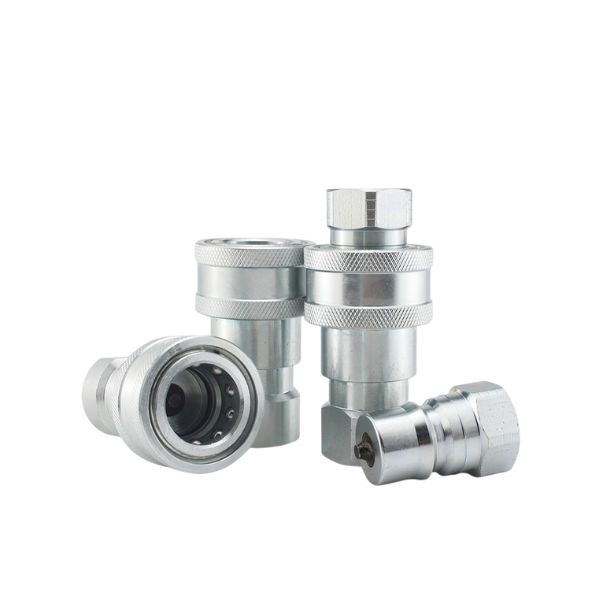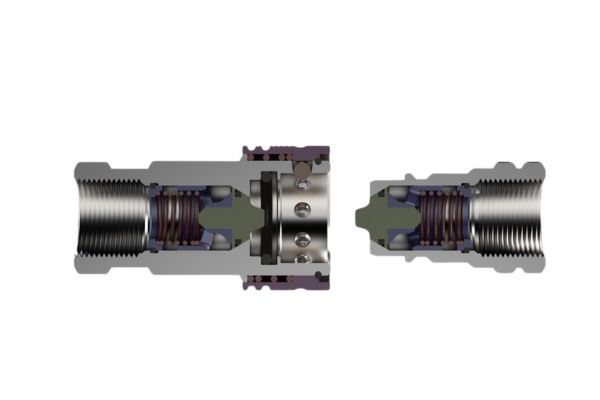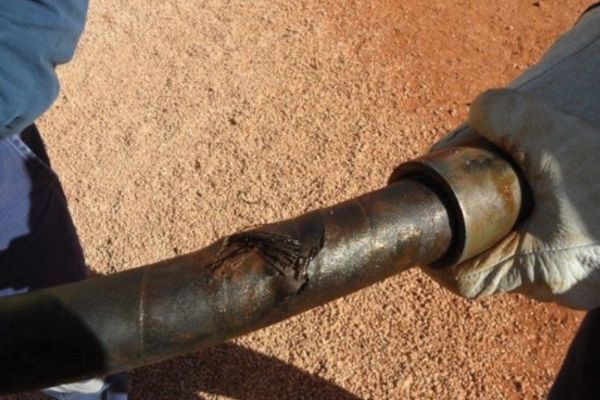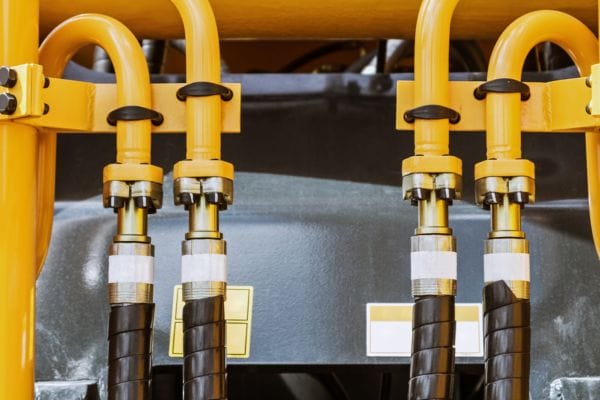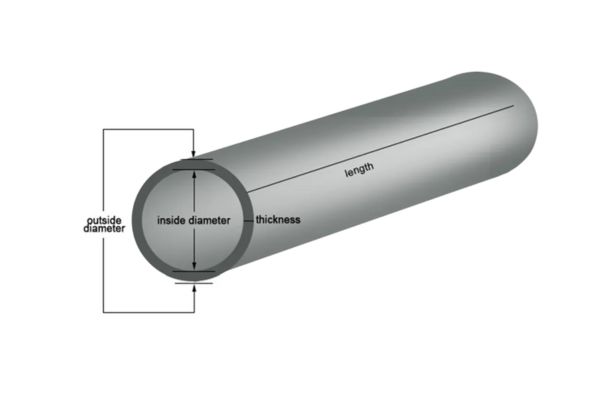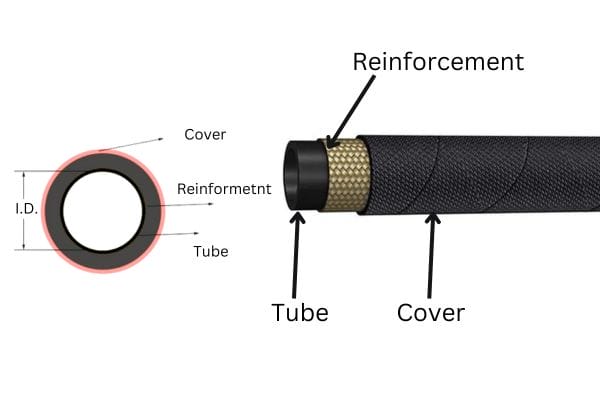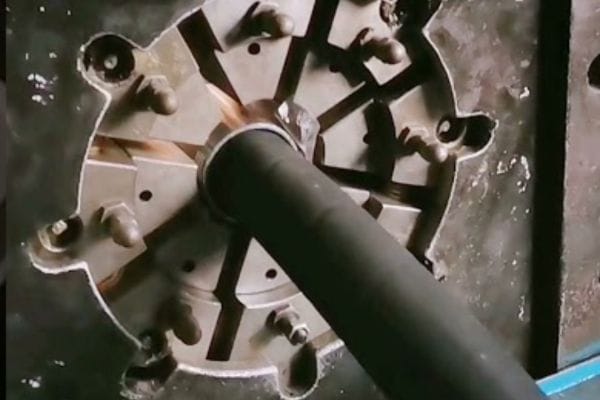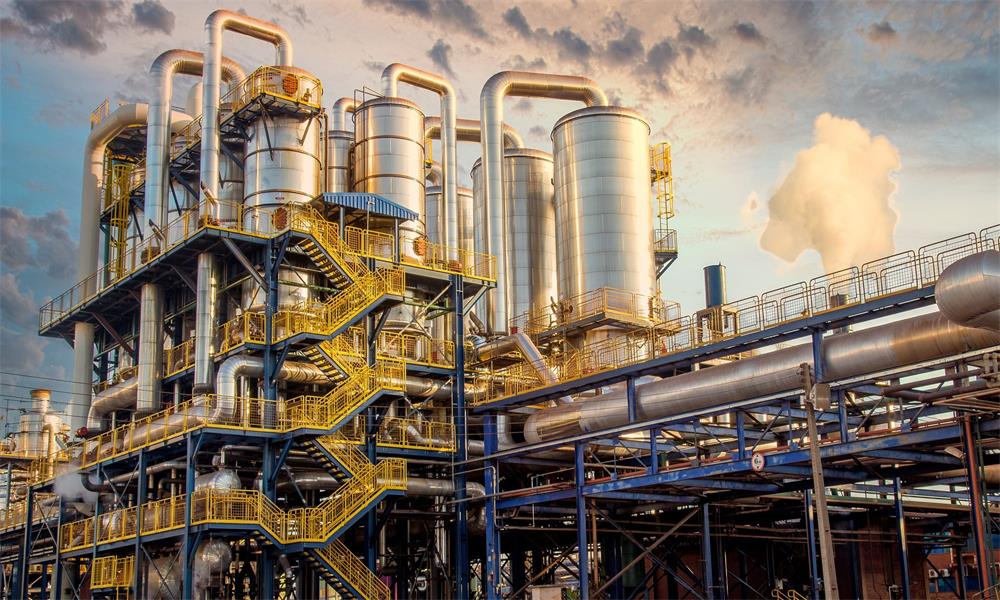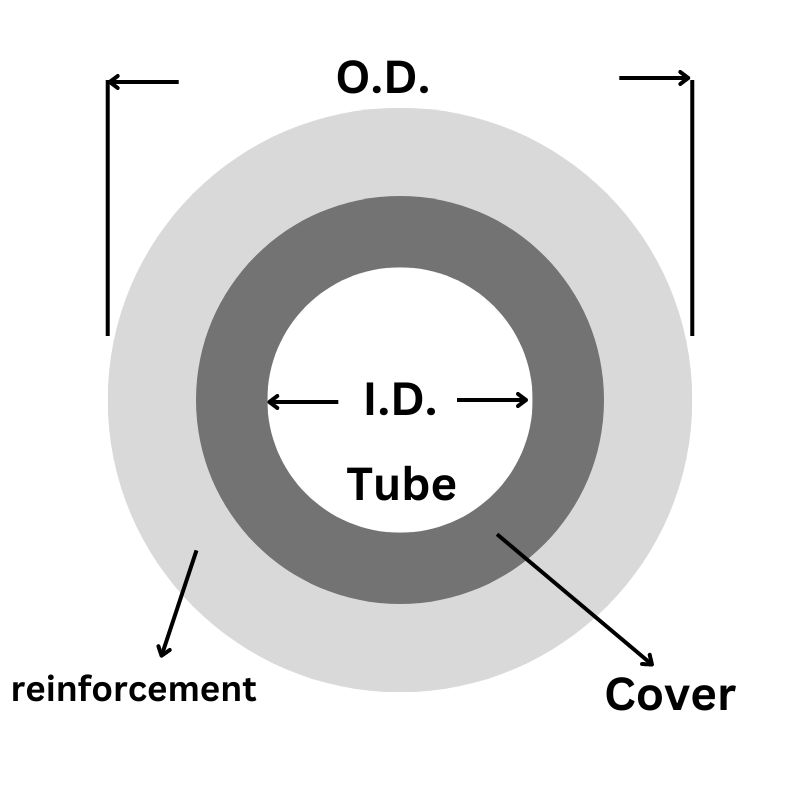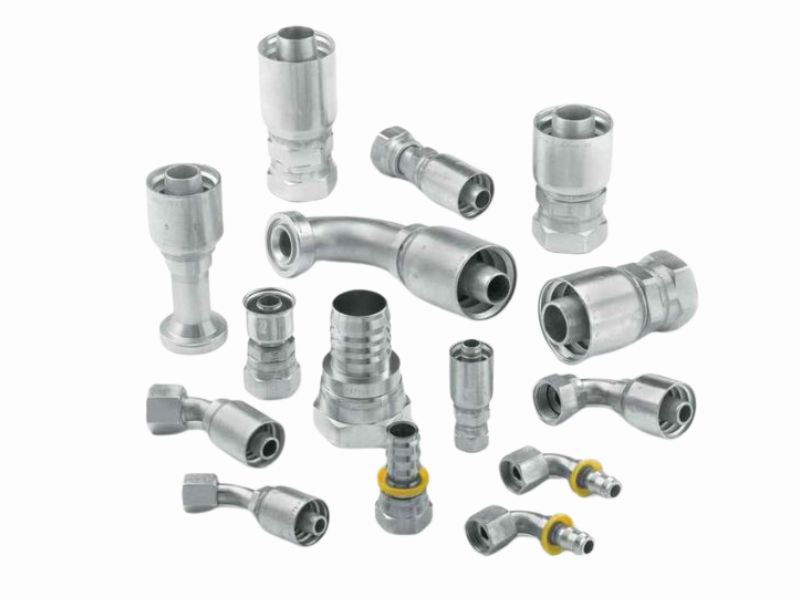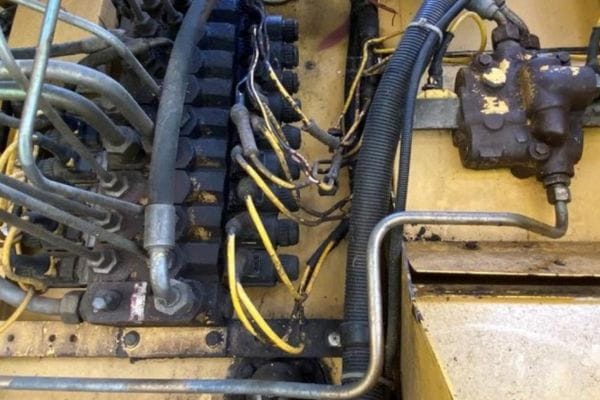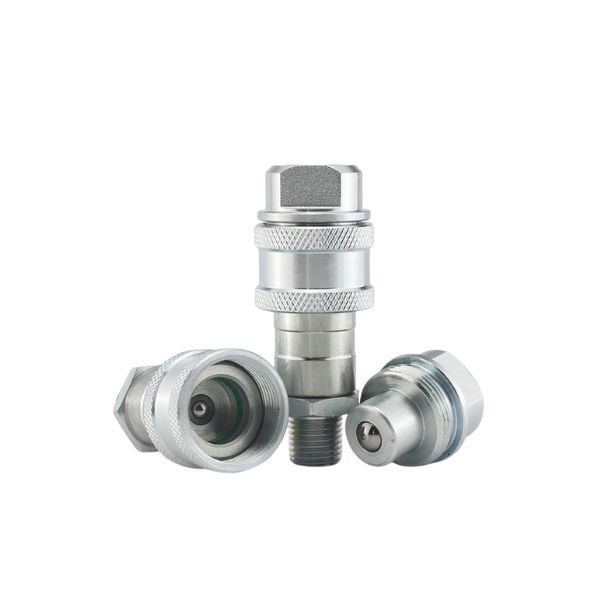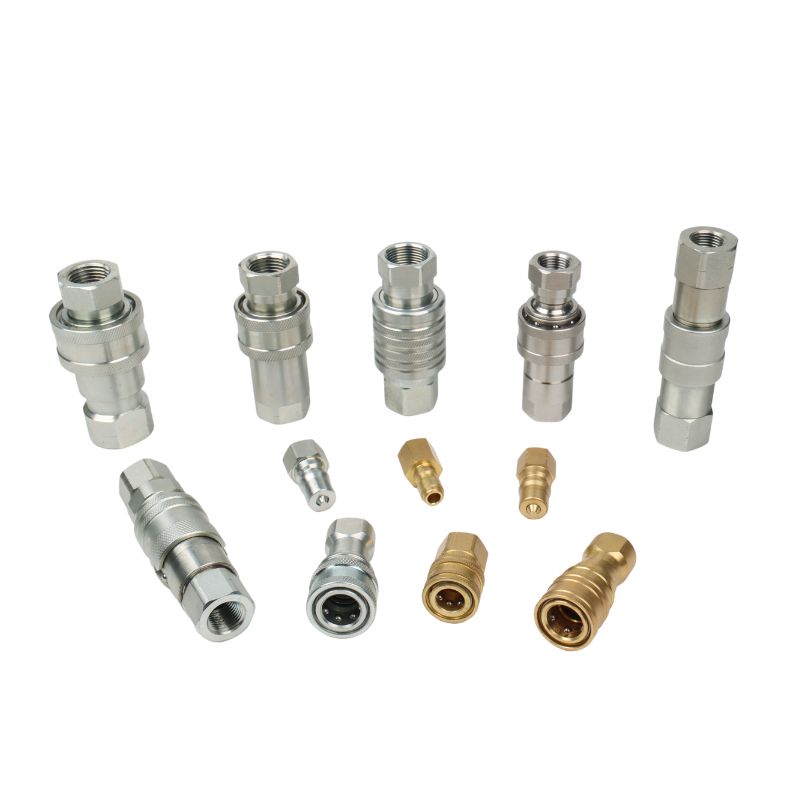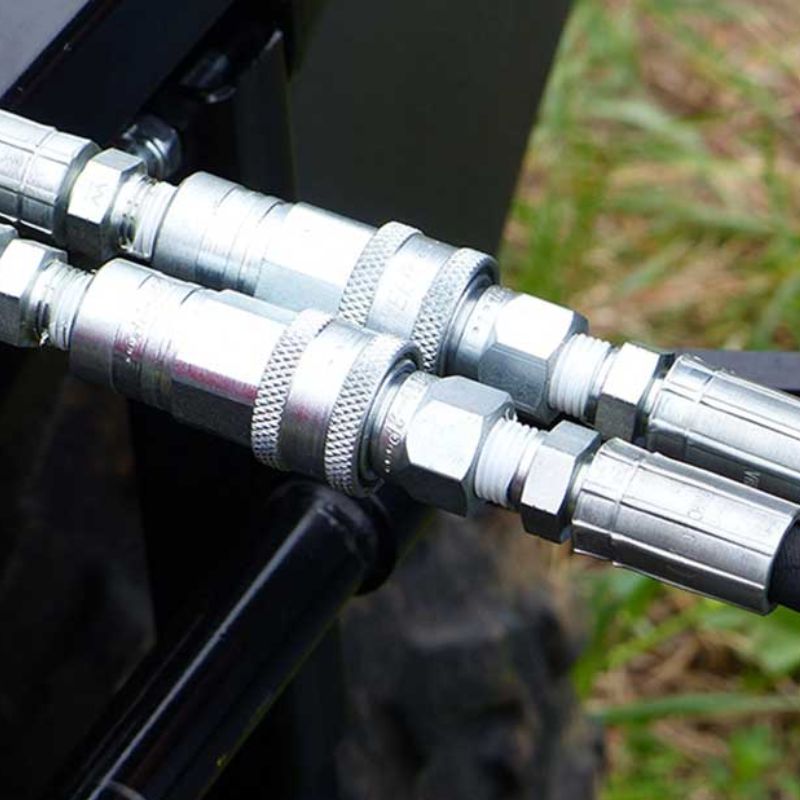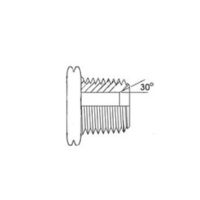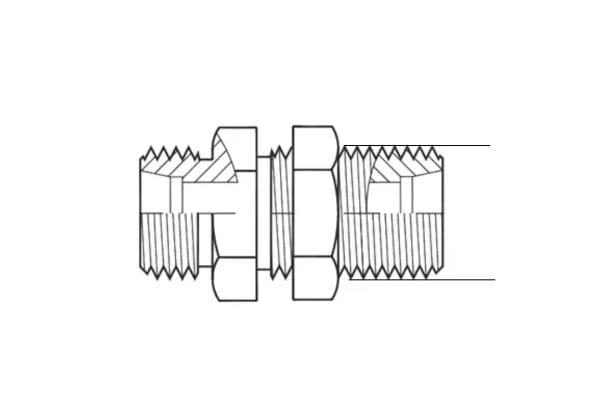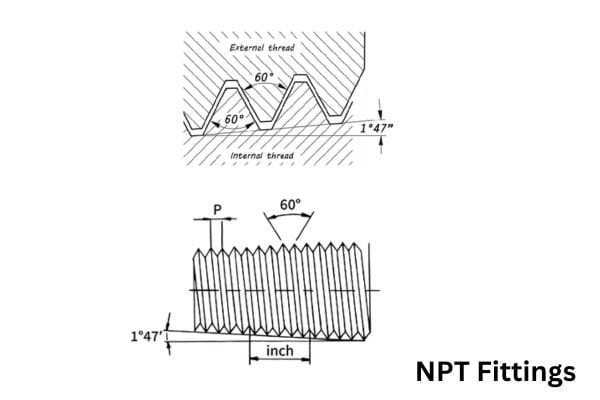Hydraulic couplings are devices that connect hoses, pipes, or tubes in a hydraulic system, allowing for the seamless transfer of pressurized fluid. Among the various types of couplings available, poppet-type hydraulic couplings stand out due to their unique valve design, which offers superior sealing and high-pressure handling capabilities. These couplings are equipped with a poppet valve that seals automatically when disconnected, preventing fluid loss and contamination, making them an essential choice for high-pressure and rugged applications.
What Are Poppet-Type Hydraulic Couplings?
Basic Definition
Poppet-type hydraulic couplings are a specific class of quick-disconnect couplings used in hydraulic systems to connect or disconnect fluid lines without causing significant fluid loss or introducing contaminants into the system. The distinguishing feature of this coupling is the poppet valve, a spring-loaded valve that ensures fluid control when connecting or disconnecting. Poppet-type couplings are designed to handle high-pressure systems and are often used in demanding applications where performance and safety are critical.
These couplings are built to seal effectively and prevent leakage, even when subjected to high levels of pressure. They are highly favored in industries like construction, agriculture, and defense due to their durability and reliability in harsh environments. The robust design of the poppet valve allows the coupling to endure rigorous conditions while maintaining performance, making it ideal for both mobile and industrial hydraulic systems.
How They Work
The core mechanism behind poppet-type hydraulic couplings lies in the poppet valve, which acts as the sealing element within the coupling. This valve is typically spring-loaded and positioned to remain closed when the coupling is disconnected. Here’s a breakdown of the process:
Connection:
When the male and female halves of the coupling are connected, the poppet valves in both parts are pushed open, allowing fluid to flow through the hydraulic line. The alignment of the internal components ensures that the valves open only when a secure connection is made, preventing accidental spills or pressure loss.
Disconnection:
When the coupling is disconnected, the poppet valve in each half immediately closes, stopping the flow of fluid. This automatic sealing action prevents hydraulic fluid from leaking out and keeps contaminants from entering the system.
Sealing Mechanism:
The valve’s spring ensures that it returns to the closed position as soon as the connection is broken, maintaining the integrity of the hydraulic line. The poppet valve’s precision design ensures a tight seal, even under high-pressure conditions.
This self-sealing design makes poppet-type couplings particularly useful in systems where the fluid is under high pressure or where the cleanliness of the fluid is critical to the system’s operation. The prevention of fluid loss not only conserves the hydraulic fluid but also minimizes the environmental impact, which is a significant concern in many industries.

Comparison to Other Coupling Types
Poppet-type hydraulic couplings differ from other common hydraulic couplings in several key ways. One notable comparison is with ball-type couplings, another popular type of quick-disconnect hydraulic coupling.
Poppet-Type vs. Ball-Type Couplings:
Sealing Mechanism:
Poppet-type couplings use a spring-loaded valve that closes automatically upon disconnection, ensuring a tight seal. Ball-type couplings, on the other hand, use a series of small balls to hold the two coupling halves together. When disconnected, ball-type couplings often allow more fluid leakage compared to poppet-type couplings, which have superior sealing.
Pressure Rating:
Poppet-type couplings are generally better suited for high-pressure systems because their valve design can withstand greater forces. In contrast, ball-type couplings are more commonly used in lower to moderate pressure applications.
Fluid Flow:
Poppet-type couplings can restrict fluid flow more than ball-type couplings due to the internal poppet valve, which slightly reduces the diameter of the flow path. Ball-type couplings, by comparison, offer a more open flow, which can be advantageous in systems where maximum flow is required.
Poppet-Type vs. Flat-Face Couplings:
Flat-face couplings are known for their zero-leak design, making them ideal for applications where fluid cleanliness and preventing spillage are the top priorities. While poppet-type couplings offer excellent sealing, they may not achieve the same zero-leak performance as flat-face couplings. However, poppet-type couplings excel in higher-pressure environments compared to flat-face designs.
Flat-face couplings tend to have a simpler design, which makes them easier to clean and maintain in environments where dirt and debris are concerns, while poppet-type couplings’ more intricate valve design offers better control over fluid disconnection and reconnection.
Key Features of Poppet-Type Hydraulic Couplings
Design and Structure
Poppet-type hydraulic couplings are engineered with a unique internal structure that contributes significantly to their performance, especially in high-pressure systems. The core element of these couplings is the poppet valve, a spring-loaded mechanism that plays a crucial role in sealing and fluid control. The poppet valve opens only when the male and female halves of the coupling are fully engaged, ensuring that fluid transfer occurs without any leaks. When disconnected, the valve instantly closes, preventing fluid loss and contamination.
The coupling typically consists of two main components: the male (plug) and the female (socket) halves. Each half contains a poppet valve, and upon connection, the valves depress and open to allow hydraulic fluid to flow. The valves are spring-loaded, meaning that when the coupling is disconnected, the poppet automatically returns to a closed position, effectively sealing both ends.
This design not only ensures excellent sealing but also provides protection against accidental disconnections, which could otherwise result in dangerous fluid leaks. The structure also includes robust seals, such as O-rings, which help maintain pressure and prevent leaks at the points where the coupling connects.
Pressure Handling
One of the standout features of poppet-type hydraulic couplings is their ability to handle high-pressure environments. These couplings are designed to perform in systems where pressures can exceed 5000 psi (pounds per square inch) or more, making them ideal for industrial, mobile, and other heavy-duty applications.
In high-pressure systems, the integrity of the connection between hydraulic lines is critical, and poppet valves ensure that the hydraulic fluid remains contained and under control. Their ability to manage such pressure without compromising on safety or performance is one of the main reasons they are favored in industries where reliability is paramount.
Durability and Resistance
Poppet-type hydraulic couplings are built with durability in mind. The materials used in their construction often include hardened steel, brass, stainless steel, or chrome plating, which gives them excellent resistance to wear, corrosion, and extreme temperatures. These materials ensure that the coupling can endure the harsh conditions often encountered in industries like construction, oil & gas, and agriculture.
Additionally, the poppet valve design contributes to reduced wear on the coupling, as the valve opens only when connected, minimizing exposure to external elements like dirt, moisture, or chemicals. This enhances the longevity of the coupling, reducing the need for frequent replacements or maintenance.
Sealing Efficiency
The sealing efficiency of poppet-type hydraulic couplings is one of their most significant advantages. When the coupling is disconnected, the poppet valve immediately seals off the fluid flow, preventing leaks. This sealing efficiency is particularly important in systems that require leak-tight performance to maintain pressure and protect sensitive components.
The sealing is also crucial in applications where environmental cleanliness is a priority, such as in the aerospace or food processing industries, where fluid contamination can have severe consequences.
Benefits of Using Poppet-Type Hydraulic Couplings
Improved Safety:
Poppet-type couplings are designed to prevent fluid leakage during disconnection, significantly enhancing system safety. In hydraulic systems, leaks can lead to hazardous working conditions, environmental damage, and even system failure. The automatic sealing of the poppet valve ensures that no fluid escapes during disconnection, which is particularly critical in high-pressure systems.
Ease of Use:
These couplings are designed to allow for quick and easy connections and disconnections without the need for excessive force. This ease of use improves operational efficiency, especially in applications where couplings need to be frequently connected or disconnected, such as in mobile hydraulics.
Longer Lifespan:
Thanks to their robust construction and effective sealing mechanisms, poppet-type couplings tend to have a longer lifespan than other coupling types. The durability of the materials used, combined with the poppet valve’s protective design, reduces wear and tear, extending the service life of the coupling and minimizing maintenance needs.
Leak Prevention:
Poppet-type couplings excel in leak prevention. The poppet valve, combined with high-quality O-rings and seals, ensures a leak-tight connection even under high pressure. This minimizes fluid loss, which can help improve system efficiency and reduce operational costs.
Performance in Harsh Environments:
These couplings are built to withstand rugged environments. Whether it’s extreme temperatures, corrosive fluids, or heavy mechanical stresses, poppet-type couplings are up to the task. This makes them ideal for industries such as marine, oil & gas, construction, and agriculture, where equipment is often exposed to challenging conditions.
Applications of Poppet-Type Hydraulic Couplings
Industrial Machinery:
Poppet-type couplings are widely used in industrial machinery, particularly in systems that require frequent connection and disconnection of hydraulic lines. Their high-pressure capability and leak-proof performance make them ideal for manufacturing equipment and machinery.
Agriculture:
In agricultural applications, such as tractors and harvesters, poppet-type couplings provide a reliable connection for hydraulic systems that operate in dusty, dirty, and abrasive environments. Their durability and leak prevention are essential for maintaining efficient operation in tough field conditions.
Aerospace and Defense:
High-performance aircraft and military vehicles rely on hydraulic systems for critical functions, and poppet-type couplings are often chosen for their ability to handle extreme pressure and ensure a secure, leak-free connection. These systems need couplings that can perform reliably in high-pressure, high-stakes environments.
Marine and Oil & Gas:
In the marine and oil & gas sectors, poppet-type couplings are used in hydraulic systems where high pressure, corrosive environments, and extreme temperatures are the norm. Their corrosion-resistant materials and robust sealing make them an excellent choice for offshore platforms and subsea equipment.
Installation and Maintenance Best Practices
Proper Installation
Ensuring the proper installation of poppet-type hydraulic couplings is essential to prevent damage and ensure optimal performance. Here are the key steps for installing these couplings:
Inspect the Coupling Components:
Before installation, inspect both the male and female halves of the coupling for any signs of damage, dirt, or debris. Any contaminants or physical damage could impair the coupling’s sealing ability or lead to improper connections.
Clean the Connection Points:
Make sure the connection points (both male and female) are clean and free from any particles or residues that could affect the sealing performance. Dirt and debris can cause premature wear and tear and compromise the coupling’s ability to handle pressure.
Align the Coupling Properly:
Proper alignment is crucial to ensure a tight, leak-free connection. Misalignment can cause damage to the poppet valve, O-rings, or other internal components, leading to leaks or inefficient fluid flow.
Engage Fully:
When connecting the two halves, ensure that they are fully engaged and locked. Most poppet-type couplings have a locking mechanism or audible click to confirm that the connection is secure.
Avoid Over-Tightening:
Over-tightening the couplings can cause unnecessary stress on the threads and internal components, leading to damage. Use the appropriate amount of torque recommended by the manufacturer to ensure a secure but non-damaging connection.
Pressure Testing:
After installation, it is advisable to perform a pressure test to ensure that the coupling is securely in place and able to handle the system’s operating pressure without leaking.
Maintenance Tips
Regular maintenance of poppet-type hydraulic couplings is essential to prolong their lifespan and prevent costly downtime. Here are some important maintenance practices to follow:
Routine Inspection:
Regularly inspect the couplings for signs of wear, corrosion, or physical damage. Pay close attention to the sealing areas, including the O-rings and the poppet valve. Even minor damage to these parts can lead to leaks or system inefficiencies.
Cleaning:
Clean the coupling regularly, especially in dirty or abrasive environments. Use a clean, lint-free cloth to wipe down the coupling surfaces and remove any dust, dirt, or grime. Avoid using aggressive chemicals that may degrade the seals or metal components.
Lubrication:
Apply manufacturer-recommended lubrication to the threads and seals periodically to reduce friction during connection and disconnection. This will help maintain the integrity of the seals and prevent premature wear.
Part Replacement:
Over time, components such as O-rings and seals may wear out and need replacement. Regularly check these parts and replace them as needed to maintain sealing efficiency and pressure integrity.

Common Issues and Troubleshooting
Even with proper installation and maintenance, poppet-type hydraulic couplings can experience issues over time. Here are some common problems and how to troubleshoot them:
Leaks:
Cause: Leaks often occur due to worn-out or damaged seals, misalignment, or contaminants preventing the proper closure of the poppet valve.
Solution: Inspect the seals and O-rings for wear or damage and replace them if necessary. Ensure that the coupling halves are properly aligned and securely engaged. Clean the connection points to remove any dirt or debris that may interfere with the seal.
Difficulty Connecting or Disconnecting:
Cause: If you are having trouble connecting or disconnecting the coupling, it could be due to pressure build-up in the system, misalignment, or worn components.
Solution: Relieve any built-up pressure in the hydraulic line before attempting to disconnect the coupling. Check for proper alignment and ensure that the coupling halves are not worn or damaged. Lubricating the coupling may also ease the connection process.
Reduced Performance:
Cause: Reduced system performance can be a sign of restricted fluid flow caused by blockages or damage to the internal components of the coupling.
Solution: Disassemble the coupling and inspect the poppet valve and other internal parts for any obstructions, dirt, or damage. Clean or replace any damaged components to restore full fluid flow.
Corrosion or Rust:
Cause: Exposure to moisture or corrosive environments can cause the metal components of the coupling to rust or corrode, leading to weakened performance.
Solution: Clean the coupling thoroughly and apply anti-corrosion lubricants. If the corrosion is severe, consider replacing the coupling with one made from corrosion-resistant materials such as stainless steel.
Premature Wear:
Cause: Premature wear is often caused by contaminants, over-tightening, or improper maintenance.
Solution: Follow a regular maintenance schedule, clean the couplings frequently, and ensure proper torque during installation. Replace any worn parts as needed.
Poppet-Type vs Other Coupling Types
Ball-Type Couplings
Ball-type hydraulic couplings, also known as ball-lock couplings, differ from poppet-type couplings in both design and operation. Instead of the spring-loaded poppet valve used in poppet-type couplings, ball-type couplings rely on a series of small steel balls that lock the two halves of the coupling together when connected. When disconnected, a valve closes the fluid path to prevent leakage, though not always as efficiently as a poppet valve.
Design and Operation:
Ball-type couplings have a relatively simple design, making them easier to manufacture and maintain.
They are typically used in lower to moderate-pressure systems where the quick connection and disconnection of hydraulic lines are essential.
Fluid leakage is more common compared to poppet-type couplings, especially under high pressure, due to the less efficient sealing mechanism.
Applications:
Ball-type couplings are often found in low to medium-pressure applications, such as light-duty industrial machinery, automotive systems, and mobile hydraulics.
They are well-suited for systems where quick disconnection is required without the need for extremely tight sealing, as seen in some agricultural equipment or light construction tools.

Flat-Face Couplings
Flat-face couplings, as the name suggests, feature flat mating surfaces that form a seal when connected. This design minimizes fluid loss during disconnection, making them ideal for environments where cleanliness and the prevention of contamination are paramount.
Design and Operation:
Unlike poppet and ball-type couplings, flat-face couplings have no protruding valve elements, resulting in a completely flat surface when disconnected. This design prevents fluid from collecting on the face, which can reduce leakage and contamination.
They are known for their zero-leak performance during both connection and disconnection, making them the preferred choice in industries where fluid loss must be minimized.
Applications:
Flat-face couplings are commonly used in industries such as construction, agriculture, and material handling, where cleanliness is crucial, and the prevention of contamination is a priority.
These couplings are often used in hydraulic systems handling environmentally sensitive fluids or where dirt, dust, and other contaminants must be kept out of the system.
Which Is Best for Your Needs?
The choice between poppet-type, ball-type, and flat-face couplings depends largely on your system’s operating pressure, the type of hydraulic fluid used, and the working environment. Here’s a brief decision-making guide:
Poppet-type couplings are best suited for high-pressure systems that require a tight, reliable seal to prevent leaks. They are ideal for rugged applications, such as industrial machinery, aerospace, and defense systems, where leakage prevention and durability are key.
Ball-type couplings are appropriate for low to medium-pressure systems where quick connections are required, and small fluid losses are acceptable. They are most useful in mobile applications or light-duty industrial settings, such as agriculture or automotive.
Flat-Face Couplings excel in applications where cleanliness is crucial, and zero-leak performance is necessary. These are typically used in environments like construction or material handling, where preventing contamination of the fluid is a priority.
Conclusion
If you’re considering poppet-type hydraulic couplings for your system, it’s essential to consult with experts to ensure you’re choosing the right type based on your specific pressure requirements, fluid type, and operating environment. Don’t compromise on the safety and efficiency of your hydraulic system—make informed decisions and opt for reliable, high-performance couplings that meet your needs.
FAQ
What is a poppet-type hydraulic coupling?
A poppet-type hydraulic coupling is a quick-connect coupling designed to prevent fluid loss and contamination using a spring-loaded poppet valve that seals automatically when disconnected.
What are the benefits of poppet-type hydraulic couplings?
Poppet-type couplings provide excellent sealing, handle high pressure, prevent leaks, and are durable in rugged environments.
Where are poppet-type hydraulic couplings typically used?
These couplings are commonly used in industries like construction, agriculture, aerospace, and marine applications where high-pressure performance is required.
How do poppet-type hydraulic couplings prevent leaks?
The poppet valve automatically closes when the coupling is disconnected, ensuring minimal fluid loss and preventing contamination.
How often should poppet-type hydraulic couplings be maintained?
Regular inspections, cleaning, and seal replacement should be performed, especially in harsh working conditions, to maintain optimal performance.
Can poppet-type hydraulic couplings handle extreme temperatures?
Yes, they are made from materials like stainless steel and brass, which are resistant to extreme temperatures, wear, and corrosion.



